Preschool - Intellectual
Through exploration and problem solving, our preschoolers develop a core foundation of skills that provide the building blocks for their academic growth. Individual and small group activities allow children to benefit from individual support while also learning from and with their peers.
Below are our preschool goals for each of our content areas and examples of our curriculum activities.
Natural Science:
Inquiry Skills
• Asks questions about objects and events.
• Makes predictions about changes.
• Describes why changes occur based on knowledge.
• Records observations through drawings and photography.
Living Things & Their Environment
• Uses sense of sight, hearing, touch, smell, and taste to explore
the environment using a sensory vocabulary.
• Observes and identifies the characteristics and needs of living things.
• Investigates, describes, and compares the characteristics
that differentiate living and non-living things.
• Observes and describes plants, insects, and animals as they go
through predictable life cycles.
• Observes and describes seasonal changes in plants and animals.
• Observes and describes how natural habitats provide for the basic needs of plants and animals with respect to
shelter, food, water, air, and light.
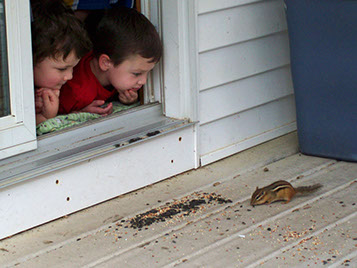
Language Arts:
Language
• Responds to teacher support in following social rules
when conversing.
• Participates in group discussions.
• Communicates personal experiences and interests.
• Describes and categorizes simple objects.
• Builds vocabulary and sentence structure.
Reading
• Enjoys listening to a variety of literature.
• Engages actively in read-aloud activities by asking questions,
offering ideas, predicting or retelling important parts of a story
or informational book.
• Identifies alphabet letters.
• Begins to develop phonemic awareness.
• Recognizes and produces simple rhyming words.
• Relates themes and information in books to personal experiences.
Composition
• Uses own words and illustrations to describe one’s experiences, tells imaginative stories, and communicates information
about a topic of interest.
• Adds details or makes changes to familiar published or class generated stories.
• Writes name and practices all letters in different ways.
• Arranges events in order when dictating a story.
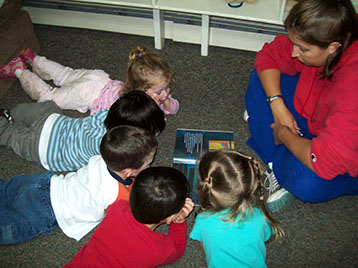
Mathematics:
Number Sense
• Counts by ones to at least 10.
• Uses numbers in a meaningful context.
• Connects quantities of concrete objects and actions to a specific number.
• Arranges materials by size.
• Uses concrete objects to solve simple addition and subtraction problems
using comparative language (more than, fewer than, same number of).
Patterns & Relations
• Describes concrete objects by their attributes.
• Sorts, categorizes, or classifies objects by more than one attribute.
• Recognizes, describes, reproduces, extends, and creates repeating patterns
with concrete materials (ABAB).
• Recognizes environmental patterns and routines.
Shapes & Spatial Sense
• Identifies shapes in various materials.
• Follows directions given about space, direction, movement, relative
position and size using body movement and concrete objects.
• Uses comparative words to describe the relationships of objects to
one another.
Measurement
• Begins to understand estimation and nonstandard units of measurement.
• Begins to use rulers, measuring cups, scales and other standard measurement tools.
Data & Analysis
• Begins to understand the purpose of collecting data and drawing conclusions.
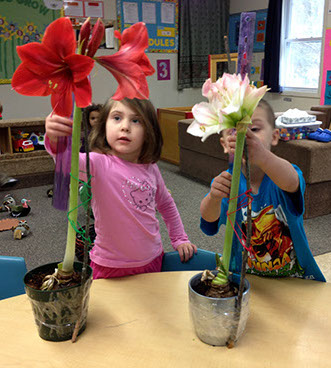
History and Social Science:
• Discusses and uses vocabulary related to the order of daily routines and time.
• Identifies and describes cause and effect related to personal experiences and
stories.
• Discusses examples of personal responsibility, fairness, rules, and the qualities
valued in a person’s character.
• Discusses classroom and family roles and responsibilities.
• Discusses and dramatizes various occupations and basic economic concepts.
• Discusses and observes national holidays and important American symbols.
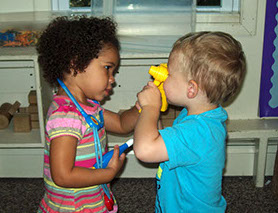
Engineering and Physical Science:
• Explores and describes a wide variety of natural and man-made materials
through sensory experiences.
• Learns safety procedures when using tools and equipment.
• Explores and identifies simple machines such as ramps, gears, wheels, pulleys
and levers.
• Observes, describes, and compares ways humans, animals, birds, and insects use
various parts of their bodies to accomplish certain tasks.
• Demonstrates and describes actions that change an object’s motion such as
pulling, pushing, twisting, rolling, and throwing.
• Explores, describes, and compares the properties of liquids and solids found in
the daily environment.
• Experiments with a variety of objects to determine how they stand, balance, and
whether they sink or float.
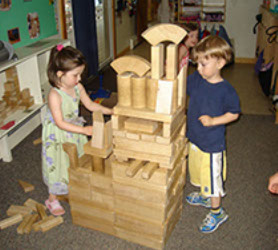
508-339-4111
1100 School St.
Mansfield, MA 02048
